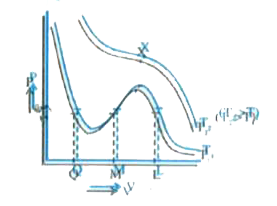The oxidation number of carbon is zero is Solution in Telugu
HCHO
CH2Cl2
C6H12O6
C12H22O11
The correct Answer is:A, B, C, D
Step by step video, text & image solution for The oxidation number of carbon is zero is by Chemistry experts to help you in doubts & scoring excellent marks in Class 12 exams.
Topper's Solved these Questions
- BOOK - AAKASH SERIESCHAPTER - STOICHIOMETRYEXERCISE - PRACTICE SHEET (EXERCISE-II LEVEL-II LINKED COMPREHENSION TYPE QUESTIONS)5videos
STOICHIOMETRY
- BOOK - AAKASH SERIESCHAPTER - STOICHIOMETRYEXERCISE - PRACTICE SHEET (EXERCISE-II LEVEL-II MATRIX MATCHING TYPE QUESTIONS)2videos
STOICHIOMETRY
- BOOK - AAKASH SERIESCHAPTER - STOICHIOMETRYEXERCISE - PRACTICE SHEET (EXERCISE-II LEVEL-II STRAIGHT OBJECTIVE TYPE QUESTIONS)10videos
STOICHIOMETRY
- BOOK - AAKASH SERIESCHAPTER - STATES OF MATTER EXERCISE - ADDITIONAL PRACTICE EXERCISE -PRACTICE SHEET (ADVANCED) (LINKED COMPREHENSION TYPE QUESTIONS) (PASSAGE- IV)2videos
STATES OF MATTER
- BOOK - AAKASH SERIESCHAPTER - SURFACE CHEMISTRYEXERCISE - Objective Excersice - 4 (ASSERTION (A)& REASON (R ) TYPE QUESTION)34videos
SURFACE CHEMISTRY
Similar Questions
Oxidation number is the charge which an atom of an element has in its ion or appears to have when present in the combined state. It is also called oxidation state. Oxidation number of any atom in the elementary state is zero. Oxidation number of a monoatomic ion is equal to the charge on it. In compounds of metals with non metals, metals have positive oxidation number while non metals have negative oxidation numbers. In compounds of two difference elements, the more electronegative element has negative oxidation number whereas the other has positive oxidation number. In complex ions, the sum of the oxidation number of all the atoms is equal to the charge on the ion. If a compound contains two or more atoms of the same element, they may have same or different oxidation states according as their chemical bonding is same or different.
Oxidation number of sodium in sodium amalgam is01:37View SolutionMatch the following columns
 01:39View Solution
01:39View SolutionAn element A in a compound AB has oxidation number -n. IT is oxidized by Cr2O2−7 in acid medium. In the experiment 1.68×10−3 moles of K2Cr2O7 was used for 3.36×10−3 moles of AB. The new oxidation number of A after oxidation is
01:51View SolutionAt a particular temperature and pressure for a real gas Van der Waal's equation can be written as:
(P+aV2m)(Vm−b)=RT

where Vm is molar volume of gas. This is cubic equation in the variable Vm and therefore for any single value of P & T there should be 3 values of Vm. Which are shown in graph as Q, M and L.
As temperature is made to increase at a certain higher temperature the three values of Vm becomes identical. The temperature, pressure & molar volume at point X are called Tc, Pc & Vc for real gas. The compressibility factor in terms of Pc, Vc and T is called Zc.
The expression of Van dcr Waal's constant 'a' can be given as03:45View Solution(A) De-emulsification is a reverse process of emulsion formation
(R ) During de-emulsification , the emulsion breaks to give oil and water.02:24View SolutionThe oxidation number of carbon is zero in
02:07View SolutionOxidation number of carbon in carbon sub-oxide is:
02:25View SolutionCarbon has zero oxidation number in
03:22View SolutionOxidation state of carbon is not zero in
View SolutionA compound in which the oxidation number of carbon is zero is
01:00View SolutionIn which of the following compounds the oxidation number of carbon is zero ?
01:21View SolutionThe oxidation number of carbon is zero in
01:00View SolutionIn which of the following compounds , the oxidation number of carbon is not zero ?
02:13View SolutionIn which of the following compounds , the oxidation number of carbon is not zero ?
04:56View Solution(A): Oxidation state of carbon in C_(6)H_(12)O_(6) is zero. (R) : Oxidation state of carbon in all organic compounds is zero.
03:29View Solution

